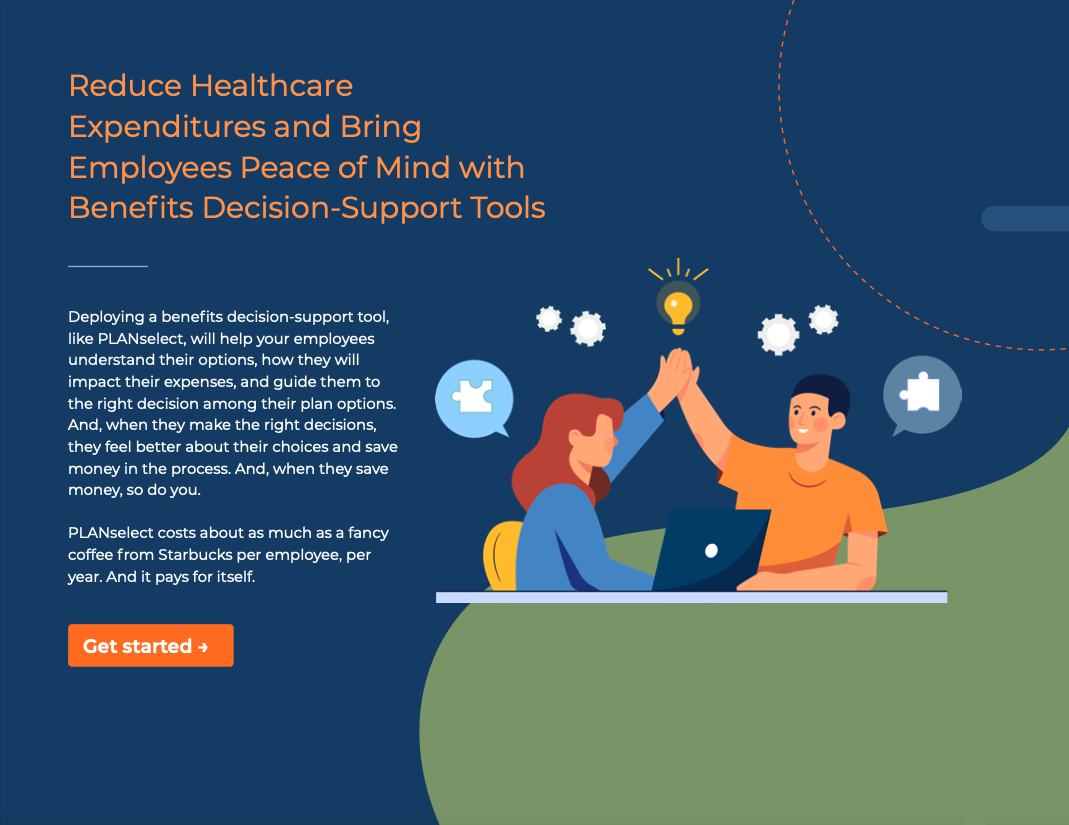 Benefits decision support has come a long way since employees had to fill out endless forms while reading nearly inscrutable jargon explaining what their benefit options were. Health insurance is still difficult for employees to understand and use efficiently. But thanks to new technology and products building on video communications, employees are getting more information about their benefit options faster. It’s allowing them to make smart and relatively painless decisions about their healthcare coverage and other benefits like retirement plans. In a time when so much remains uncertain, having easy-to-use technology for remote workforces is vital for HR teams.
Benefits decision support has come a long way since employees had to fill out endless forms while reading nearly inscrutable jargon explaining what their benefit options were. Health insurance is still difficult for employees to understand and use efficiently. But thanks to new technology and products building on video communications, employees are getting more information about their benefit options faster. It’s allowing them to make smart and relatively painless decisions about their healthcare coverage and other benefits like retirement plans. In a time when so much remains uncertain, having easy-to-use technology for remote workforces is vital for HR teams.
Benefits Decision Support for Flexible Benefits Packages
Employers of all kinds have been shifting their benefits packages to be more flexible and tailored to each employee’s needs for years but, as the pandemic rears its head, flexibility is more important than ever. Employee benefits used to be structured with one thing in mind: saving the company money. Today, benefits and how employees sign up for them are part of larger employee-engagement efforts in response to COVID.
Many employees are still working from home at least some of the time. Measuring and encouraging engagement is necessary for maintaining a sense of community. Benefits remain an area where cost is a concern for both employers and workers. As the pandemic stretches and strains the American healthcare system, workers are paying attention to the connection between their coverage and finances. With so many questions coming up around health benefits, it’s become a key area of employee engagement. Benefits decision support helps employees clarify what those questions should be.
Luckily for scattered HR teams, new technologies make it easier for employees to find the benefits they need.
The Rise of Artificial Intelligence
 No, Skynet isn’t real (yet). Computers haven’t taken over everything and enslaved us. But algorithms and computer-predictive technology are becoming more important in all aspects of human resources.
No, Skynet isn’t real (yet). Computers haven’t taken over everything and enslaved us. But algorithms and computer-predictive technology are becoming more important in all aspects of human resources.
The biggest advantage AI gives organizations and their workers is that it eliminates some of the repetitive, time-consuming tasks employees in all fields have to perform. Choosing the best benefits packages is an arduous task many employees dread. Building out options and optimizing benefits decision-support tools using artificial intelligence is one way to help streamline enrollment procedures and take some pressure off HR. But AI is just one of the ways HR departments are improving their benefits decision support for all employees.
Video’s Role in Virtual Benefits Enrollment
Another key component of making decisions easier around an ever-growing menu of options is video communications. Animated and live-action recordings explain concepts much faster than reading it all from a packet. At Flimp, we build video functionality into our decision-support tools to make it easy for companies to use video when explaining benefits and helping employees enroll.
 Navigating the realm of socially distant, virtual benefits enrollment, video is the go-to substitute for many in-person interactions. Maybe an overview video takes the place of a benefits presentation normally given to the workforce in a conference room. Or maybe it’ll be a series of introductory videos from vendors in place of manned booths at a benefits fair. Video is easy to produce, even in an era of standing six feet away from one another. So, it’s going to fall to video communications to educate and inform workers about their benefit options. Positioning explainer videos alongside benefits decision-support tools like PLANselect® allows companies to empower workers to decide and enroll in the benefits they need in the face of an ongoing pandemic.
Navigating the realm of socially distant, virtual benefits enrollment, video is the go-to substitute for many in-person interactions. Maybe an overview video takes the place of a benefits presentation normally given to the workforce in a conference room. Or maybe it’ll be a series of introductory videos from vendors in place of manned booths at a benefits fair. Video is easy to produce, even in an era of standing six feet away from one another. So, it’s going to fall to video communications to educate and inform workers about their benefit options. Positioning explainer videos alongside benefits decision-support tools like PLANselect® allows companies to empower workers to decide and enroll in the benefits they need in the face of an ongoing pandemic.

